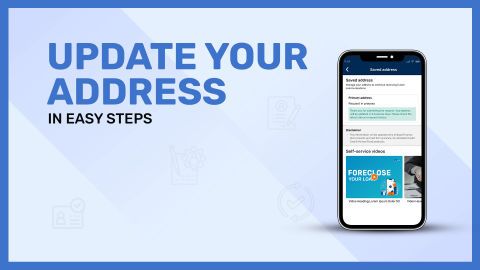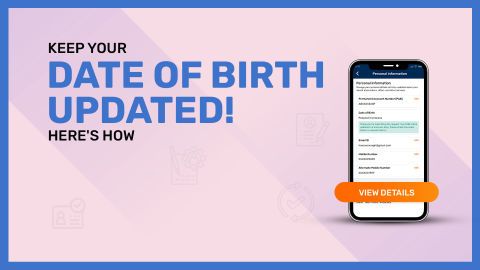Loan settlement is a crucial financial step that allows borrowers to resolve their debt by paying a reduced amount to their lender, often in one lump sum or through structured payments. This option is typically explored when borrowers face financial challenges and are unable to meet the original terms of their loan agreement. Settling a loan can provide much-needed relief by freeing borrowers from their debt obligations and preventing further legal action or penalties. However, it is important to understand the potential implications, such as the impact on your credit score and the possibility of additional fees. The loan settlement process involves negotiating with the lender to arrive at a mutually agreeable amount, which may be lower than the original outstanding balance. By making informed decisions and understanding the necessary steps, you can successfully navigate a loan settlement and achieve financial peace of mind.
Steps to settle your loan against securities
1. Review your loan agreement
Understand the terms and conditions related to settlement, foreclosure, or prepayment
Check for any lock-in periods or clauses that restrict early closure
Identify charges like foreclosure fees, prepayment penalties, or admin costs
2. Calculate the outstanding loan balance
View the current outstanding balance through your lender’s customer portal or loan statement
Factor in unpaid interest, overdue EMIs, and additional charges
Compare the pledged asset’s value with the remaining loan amount to assess payment needs
3. Contact your lender for settlement options
Request a foreclosure quote that includes all payable charges
Discuss the possibility of a negotiated settlement, if eligible
Ensure settlement terms are provided in writing
Confirm payment timelines and the procedure for releasing pledged securities
4. Pay off the remaining loan amount
Make the final payment using secure methods like net banking, UPI, or NEFT
Complete payment through the official customer portal
Collect the payment receipt or acknowledgement
Request a No Objection Certificate (NOC) after payment confirmation
Ensure the pledged securities are unpledged and returned to your demat account
Documents required for settling your loan against securities
1. Loan agreement copy
A signed copy of the original loan agreement is essential to verify the loan terms, borrower details, and any clauses related to settlement or foreclosure.
2. Identity proof
Valid government-issued ID such as Aadhaar card, PAN card, Passport, or Voter ID is required to authenticate your identity as the borrower.
3. Address proof
Submit current address proof like utility bills, Aadhaar card, Passport, or bank statement to validate your residential details.
4. Loan account statement
The latest statement showing the outstanding balance, interest due, and any overdue EMIs helps in determining the final settlement amount.
5. Foreclosure or settlement letter (if applicable)
If you’ve initiated a settlement request, obtain an official foreclosure or settlement letter from the lender outlining the total payable amount and terms.
6. Bank account details
Provide bank account details or a cancelled cheque for processing the final payment and receiving any refunds, if applicable.
7. Power of attorney (if applicable)
If someone else is settling the loan on your behalf, a notarised power of attorney is required along with their identity proof.
8. Pledge confirmation document
Include the pledge agreement or confirmation document showing the securities pledged against the loan.
9. Demat account details
Required for unpledging and transferring the securities back to your account once the loan is settled.
10. Payment receipt (post-payment)
Once you make the final payment, retain and submit a copy of the payment receipt to confirm the transaction.
11. No Objection Certificate (NOC) request form
Some lenders may ask you to fill a formal request for issuing the NOC after full settlement of the loan.
12. Communication proof
Keep a record of all official communication with your lender regarding the settlement request—emails, letters, or call logs—for future reference.
Common challenges when settling a loan against securities
1. Incomplete understanding of settlement terms
Many borrowers struggle with unclear terms, including applicable fees, settlement conditions, or foreclosure penalties, leading to confusion or disputes.
2. Hidden charges
Unexpected charges like foreclosure fees, service charges, or overdue penalties may inflate the total amount to be paid at the time of settlement.
3. Difficulty in calculating final payable amount
Borrowers often find it challenging to calculate the total outstanding, including pending interest, penalties, and taxes, resulting in payment delays.
4. Limited communication from lenders
Delays in receiving settlement quotes or NOC due to slow response from lenders can prolong the process and cause frustration.
5. Issues with unpledging securities
Even after full repayment, the unpledging of securities can face delays due to backend formalities or incomplete documentation.
6. Unavailability of required documents
Missing essential documents like loan statements, identity proof, or pledge confirmation can delay or disrupt the settlement process.
7. Errors in account or personal information
Mismatches in personal or bank account details can lead to payment issues or delays in releasing securities.
8. Poor timing of settlement
Settling close to the due date may cause additional interest accrual or EMI charges, increasing the cost unnecessarily.
9. Credit score impact
In some cases, especially with negotiated settlements, the credit report may reflect it as “settled” rather than “closed,” slightly affecting credit score.
10. Lack of clarity on refunds or excess payments
If extra amounts are paid during settlement, borrowers may face delays in receiving refunds due to unclear policies or poor coordination.
11. Discrepancies in settlement communication
Miscommunication between borrower and lender regarding final dues or settlement mode can lead to confusion or duplicate payment issues.
12. Delayed issuance of NOC
Even after completing all formalities, the No Objection Certificate might take time, preventing quick closure and asset release.
Advantages of settling your loan against securities early
1. Save on interest costs
Early settlement helps you save significantly on the total interest outgo, as interest is calculated on the outstanding balance for the loan duration.
2. Improves overall credit score
Timely settlement of your loan reflects positively on your credit report, helping boost your creditworthiness and chances of getting future loans.
3. Reduces financial burden
Closing your loan early reduces monthly liabilities, allowing better financial planning and increased cash flow for other priorities.
4. Quick release of securities
Once the loan is settled, the pledged securities are unpledged and returned to your demat account, giving you back full control of your investments.
5. Peace of mind
Paying off the loan before tenure ends removes the constant reminder of EMI deductions and ensures peace of mind regarding repayment commitments.
6. No Risk of EMI default
Early closure eliminates the risk of missing future EMIs, which can lead to penalties or negative impacts on your credit history.
7. Simplifies financial portfolio
With one less active liability, your financial records become cleaner and easier to manage, especially useful when applying for other financial products.
8. Better investment opportunities
Upon unpledging, you can use the returned securities for reinvestment or liquidate them for higher-return opportunities.
9. Avoids future interest rate hikes
If your LAS has a floating interest rate, settling early helps you avoid potential increases in rates during the loan tenure.
10. Faster NOC issuance
Early settlement helps initiate a quicker process for getting the No Objection Certificate, essential for closure and future documentation.
11. Access to new loan offers
Borrowers who close their existing loans early may become eligible for better interest rates or higher loan amounts in future credit applications.
12. Easy tracking through customer portal
You can easily check your outstanding loan and initiate early repayment via the Bajaj Finserv customer portal for added convenience.
13. Support from Bajaj Finance customer service number
If you need any help during the early settlement process, Bajaj Finance customer support is available to guide you through every step.
Conclusion
Settling your Loan Against Securities early is a smart financial move that offers multiple benefits—from saving on interest costs to improving your credit score and regaining control over your pledged investments. It simplifies your financial obligations and gives you peace of mind by eliminating monthly EMI stress. Additionally, early settlement opens doors to better financial opportunities and new credit offers. With user-friendly digital tools like the customer portal and prompt support via the Bajaj Finance customer service number, the process is hassle-free and efficient. Make the most of your investments by planning an early loan closure today.
Loan support made easy—read on
Wrong Linking Account For Loan Against Securities Emi Deduction |




